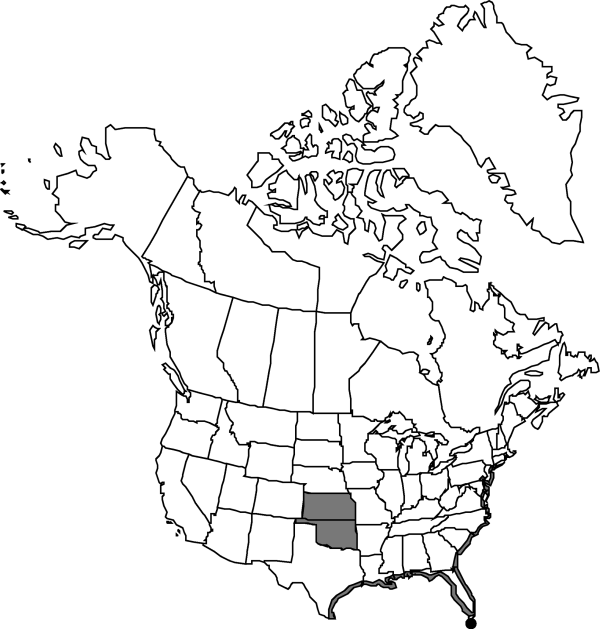Sesuvium maritimum
Prelim. Cat., 20. 1888.
Plants annual, papillate, glabrous. Stems prostrate to ascending, usually copiously branched, 1–4 dm; not rooting at nodes. Leaves: petiole clasping; blade spatulate to ovate, 1–2.5 cm, base tapering. Inflorescences: flowers usually solitary; pedicel usually absent or to 1 mm. Flowers: calyx lobes pink or purple adaxially, with subapical abaxial appendages, ovate, 3 mm; stamens 5; pistil 2–3-carpellate; ovary 2–3-loculed; styles 2–3. Capsules ovoid, 4–5 mm. Seeds 30–50, blackish brown, 1 mm, iridescent, smooth.
Phenology: Flowering summer–fall (year-round in se Tex).
Habitat: Sandy shores, beaches, dune swales, brackish marshes, banks along or near coasts, waste grounds, ballast
Elevation: 0-100 m
Distribution

Ala., Del., Fla., Ga., Kans., La., Md., Miss., N.J., N.Y., N.C., Okla., Pa., S.C., Tex., Va., West Indies
Discussion
Sesuvium maritimum is often overlooked in coastal environments, perhaps due to the small size of some individuals, particularly in the northern portions of its distribution. Nonetheless, this species appears to be infrequent (and possibly in decline) in coastal environments of northern states (e.g., Delaware, Maryland, New Jersey, and New York), where development of the coast has impacted sensitive environments. This species is also present in Kansas and Oklahoma but its distribution in those states is currently not well known.
The name Sesuvium sessile Persoon has been misapplied to this species.
Selected References
None.
Lower Taxa
"dm" is not declared as a valid unit of measurement for this property.